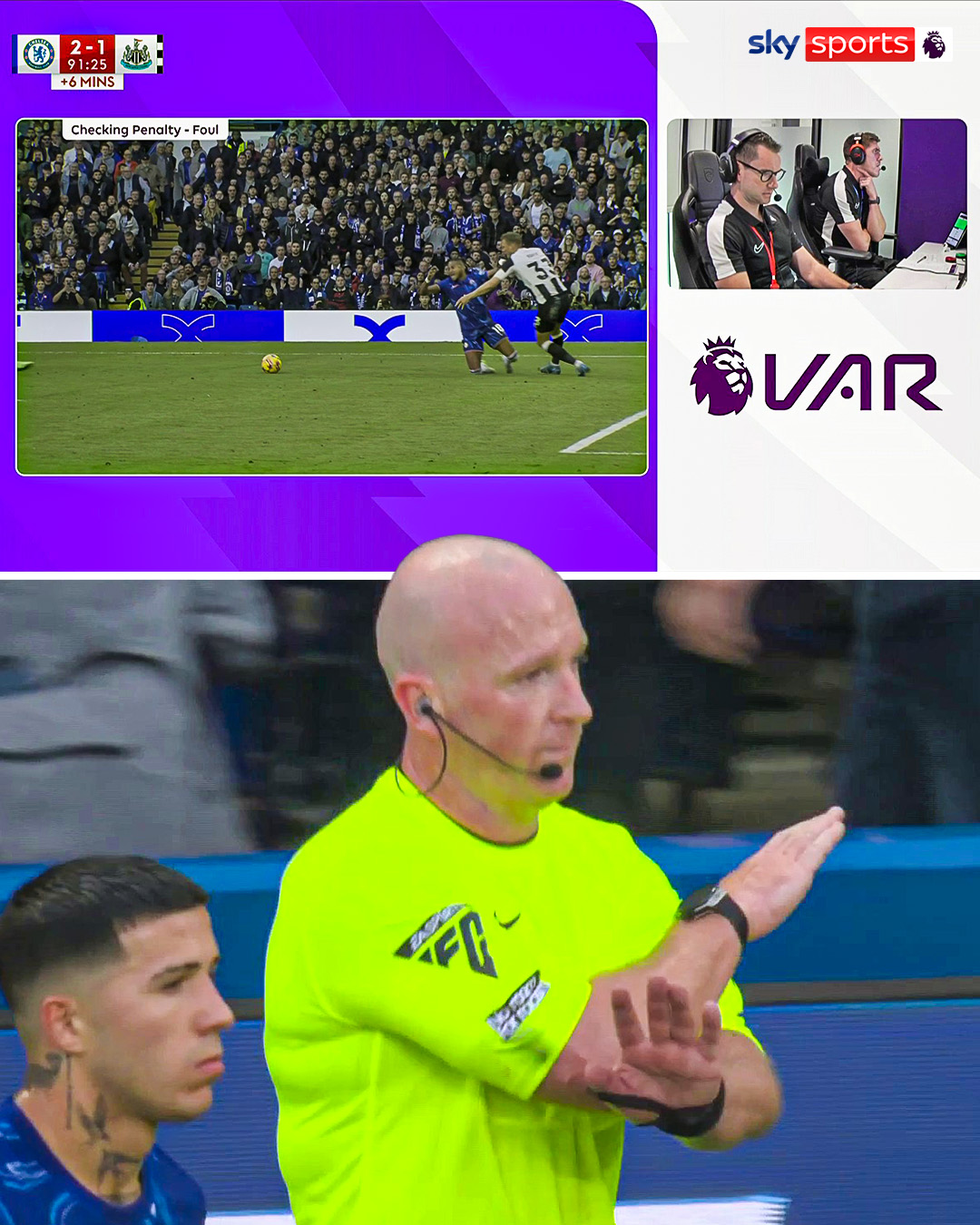Chelsea and Newcastle faced pivotal VAR (Video Assistant Referee) decisions that shaped the outcome of their Sunday clash, highlighting just how influential technology has become in determining match results. Chelsea’s Cole Palmer thought he’d provided his team with an early breakthrough in the fourth minute, but VAR intervention ruled the goal offside, dashing his and the fans’ hopes. Later, Newcastle’s Alexander Isak found the back of the net, and after another VAR review, his goal was upheld. This situation led fans to question why one goal was disallowed while the other stood.
Palmer’s Disallowed Goal
Early in the game, Cole Palmer received a clever pass from Nicolas Jackson and slotted the ball past the Newcastle keeper. Initially, the referee indicated the goal was valid, prompting early celebrations from Chelsea. However, VAR officials, led by Jarred Gillett, promptly called for a review, scrutinizing the sequence more closely. On replay, it was revealed that Palmer had been just slightly ahead of Newcastle’s last defender, Bruno Guimaraes, when Jackson released the ball. Under the offside rule, any part of the body that can legally play the ball (like the head, feet, or torso) must be level with or behind the last defender at the time of the pass, which VAR determined was not the case here.
The Premier League later explained the decision, saying, “Cole Palmer was found to be in an offside position when the pass was played.” Although it was a tight call, VAR’s precise angle analysis left no room for doubt. The goal, which had momentarily set the tone for Chelsea, was taken off the scoreboard, a decision that deflated the team’s early momentum.
Why Isak’s Goal Stood
In the 32nd minute, Newcastle’s Alexander Isak found himself in a similar position but with a different outcome. Isak skillfully timed his run and positioned himself in line with Chelsea’s last defender when the ball was played. The initial on-field decision flagged Isak’s goal as offside, but VAR was called upon once again to review the sequence closely. After analyzing freeze frames, VAR confirmed Isak had managed to stay level with Chelsea’s last line of defense, making his goal legitimate under the offside rule.
The Premier League explained the decision with clarity, stating, “Isak’s goal was valid because he was in line with the last defender.” Unlike Palmer, Isak’s well-timed movement ensured he remained onside, securing Newcastle the lead.
Understanding the Offside Rule and VAR’s Role
The offside rule is designed to ensure fair play, preventing attackers from gaining an undue advantage by positioning themselves closer to the goal without an opposing defender between them and the goalkeeper. To be onside, an attacker must be level with or behind the last defender at the moment the pass is played. If any scoring body part (head, torso, or feet) is ahead of the final defender, the player is deemed offside, nullifying the goal.
In this game, VAR’s accuracy allowed referees to determine whether both Palmer and Isak were onside or offside through freeze-frame technology and precise camera angles. While some fans may feel that these close calls are harsh, they demonstrate how VAR strives to uphold the integrity of the game, though at times it can lead to heartbreaking reversals like Palmer’s.
